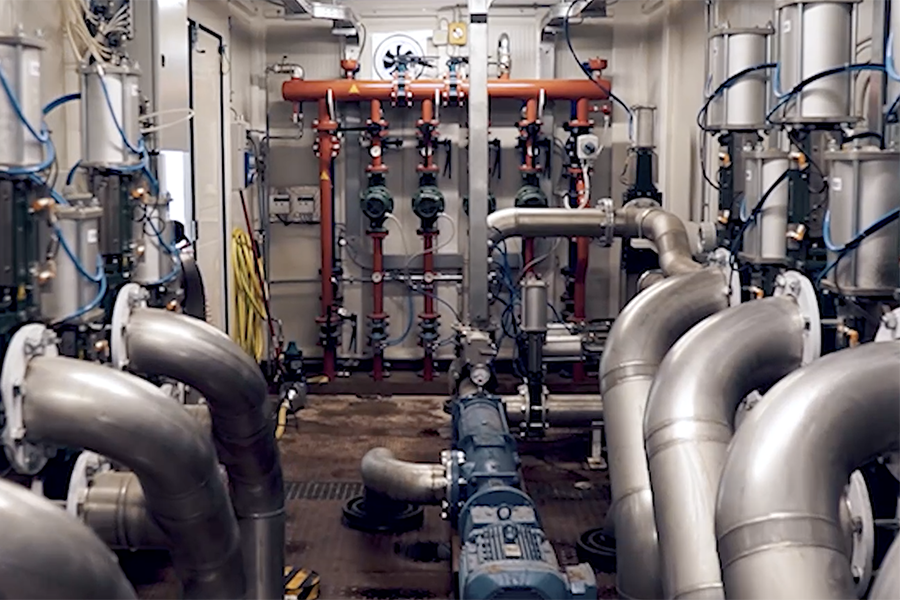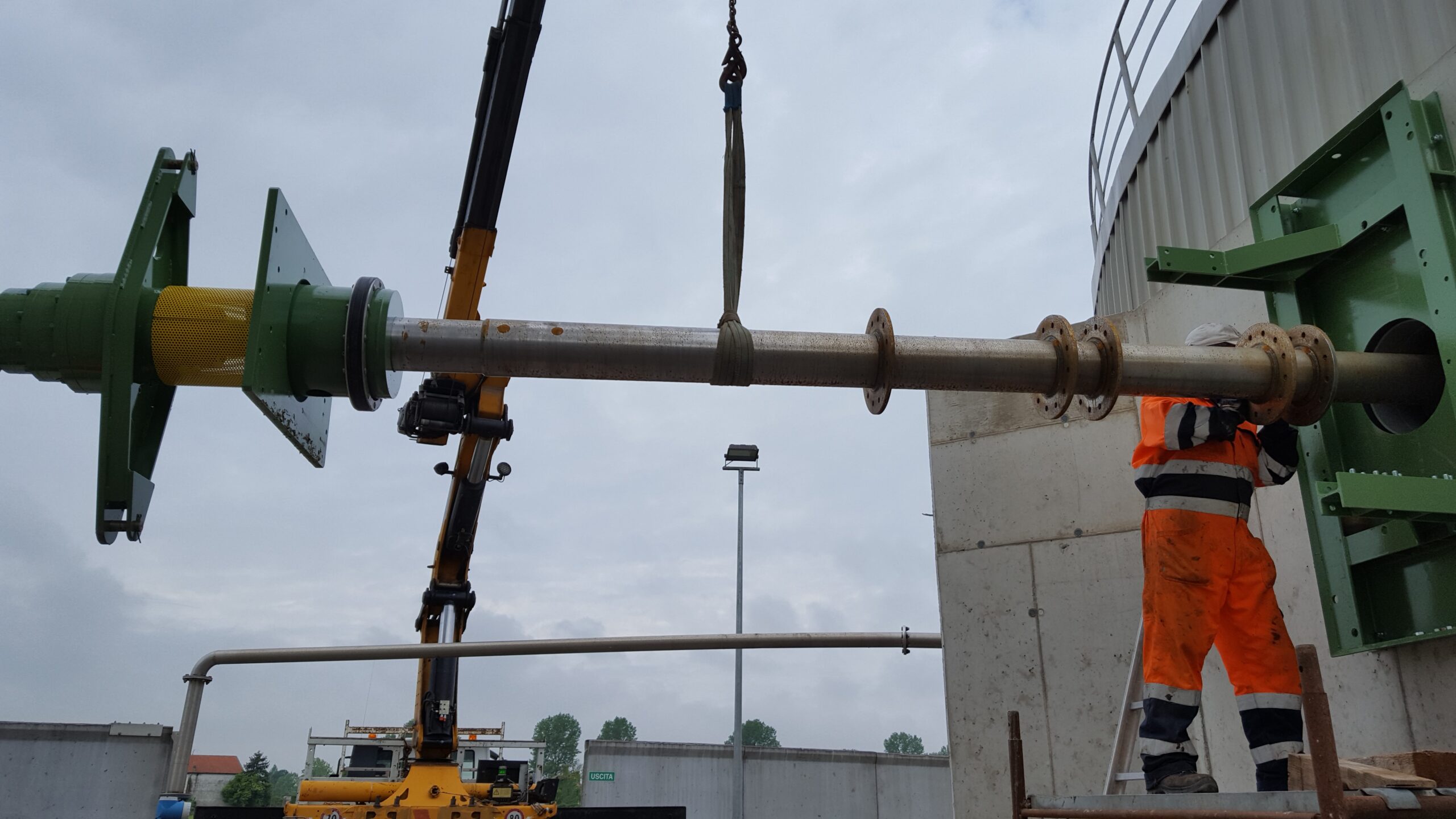
Biogas and biomethane are two renewable and programmable energy sources. Biogas is produced by bacterial fermentation in the absence of oxygen from livestock waste or low-energybiomass, through a process called digestion. It is composed mainly of methane, carbon dioxide, and a small percentage of hydrogen, hydrogen sulfide, ammonia, and water vapor.
Biogas, once treated and purified through desulfurization, CO2 removal, water vapor removal, and hydrogen sulfide removal, becomes methane at a 95–98% concentration.
Biogas and biomethane are excellent examples of circular economy, because through the digestion process, livestock effluents, by-products, and catch crops can be enhanced and transformed into electricity, heat, or fuel for transportation. The resulting digestate is a by-product that is reused as an amendment and high-quality fertilizer for organic and eco-sustainable agriculture.
Biogas and Biomethane for circular economy goals.
Thanks to the experience gained over the years, following thousands of maintenance interventions on operating facilities, Corradi & Ghisolfi has reached a top-level technical knowledge in the biogas and biomethane sector, making it a leader in the field.
The combination of technologies applied to construction, facility engineering, and general maintenance— managed by a single point of contact—makes the company unique in the sector.
DESIGN OF BIOGAS PLANTS
Construction and development of biogas facilities, which are essential in the energy transition and decarbonization process, as they allow the recovery and transformation of livestock effluents, by-products, and catch crops into electricity and heat through anaerobic digestion.
The resulting digestate is a by-product reused as an amendment and high-quality fertilizer for organic and eco-sustainable agriculture.
MAIN ADVANTAGES
Corradi & Ghisolfi’s solid experience, gained from thousands of maintenance interventions on biogas facilities, enables the design and construction of any type of biogas facility quickly and with extreme precision.
INEXHAUSTIBLE ENERGY
ECONOMIC SAVINGS
ENERGY INDEPENDENCE
EASY WASTE DISPOSAL
ECO-SUSTAINABLE ENERGY
Biomethane facilities at the center of the energy transition.
Biomethane can then be used as a fuel for transportation or injected into the natural gas distribution network, also suitable for domestic use.
AGRICULTURAL AND OFMSW BIOMETHANE FACILITIES
Corradi & Ghisolfi’s facilities allow the production of treated and purified biogas (the upgrading process) through desulfurization, CO2 removal, water vapor removal, and hydrogen sulfide removal, thus obtaining methane at 95–98%. The biomethane produced can be used for transportation or injected into the natural gas distribution network, also suitable for domestic use.
REVAMPING
Many agricultural companies choose to produce biomethane from the biogas obtained through anaerobic digestion facilities. Revamping is a process that allows the conversion of a facility from biogas to biomethane, increasing (if necessary) the biogas production, optimizing self-consumption, and adapting the facility to the sustainability standards imposed by new regulations.
This type of intervention requires precise knowledge of the available resources, from the feedstock recipe to the available area for new installations.
To carry out a conversion, it is also necessary to install an excellent mixing system capable of handling difficult matrices (manure, by-products, and marginal crops) and to have full control of the management software to ensure better monitoring, increased safety, and an efficient facility.
MAIN ADVANTAGES
The installation of a biomethane facility promotes energy self-sufficiency and allows the production of energy and heat without increasing CO₂ emissions. It enables the valorization of waste products, the reduction of fertilizer and manure costs, and the decrease of pollution and odors within livestock farms.
BMT PROJECT
The feasibility study of a biomethane facility is the first and most important step to consider. To support our clients, we use BMT Project, an innovative software for the detailed sizing of facilities for biomethane production.
It starts from basic information provided by the client, such as: reliable and consistent feedstock recipe, destination of the produced biomethane, delivery network pressure, and general data about the existing facility.
The collected data is then processed within the software to analyze:
• Sustainability balance
• Total biogas produced and quantity allocated to cogeneration and upgrading
• Biomethane produced (Smc and tons)
• Biomethane in off-gas
• CO₂ produced (Smc and tons)
• Calculation of electrical self-consumption for cogenerator sizing
• Calculation of thermal demand for cogenerator and thermal plant sizing
• Upgrading system sizing
• Cogenerator sizing
• Booster compressor sizing
Discover the COMBI MIXER
The innovative COMBI system, designed by the Corradi & Ghisolfi team for the mixing of anaerobic fermenters, stands out from other mixing systems for its extreme robustness and high mixing efficiency with very low electricity consumption. It was awarded an industrial invention patent in October 2016.
Created in three versions—COMBI 200, COMBI 300, and COMBI MAXI—the mixers are perfectly adaptable to both existing and newly built anaerobic digesters. The slow mixing motion ensures perfect homogenization of the fermenting mass, prevents the formation of surface crusts, and allows operation with levels of dry matter that no other mixing system can achieve—all with reduced energy consumption.
The radial blades, arranged in a staggered rotation, impart a double direction of movement to the fermenting mass—both rotational and axial toward the center of the fermenter. Furthermore, since there are no electromechanical components inside the fermenter and the slow rotation reduces mechanical wear significantly, we ensure continuous production, with maintenance interventions required only at intervals exceeding 20,000 hours.
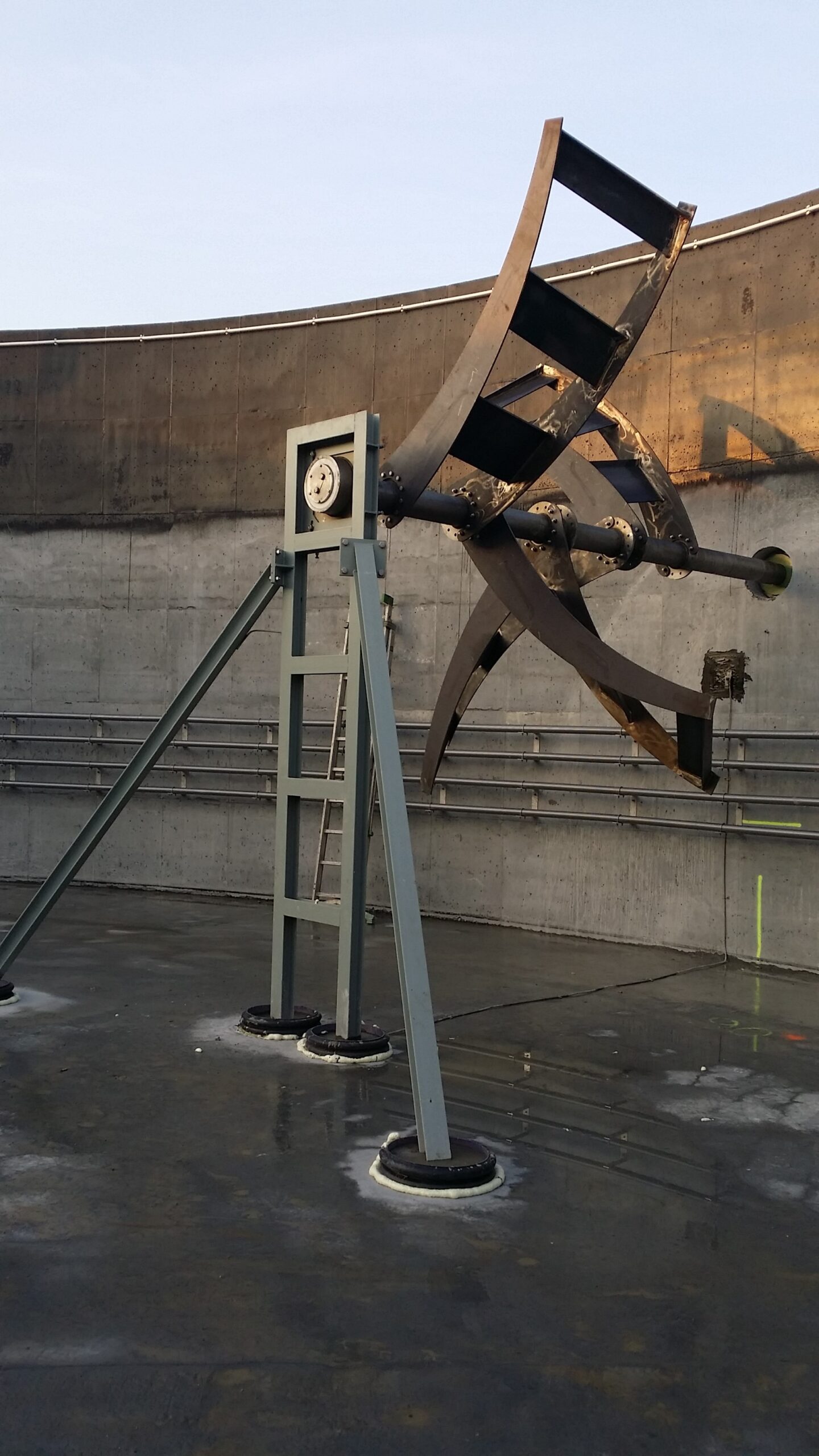
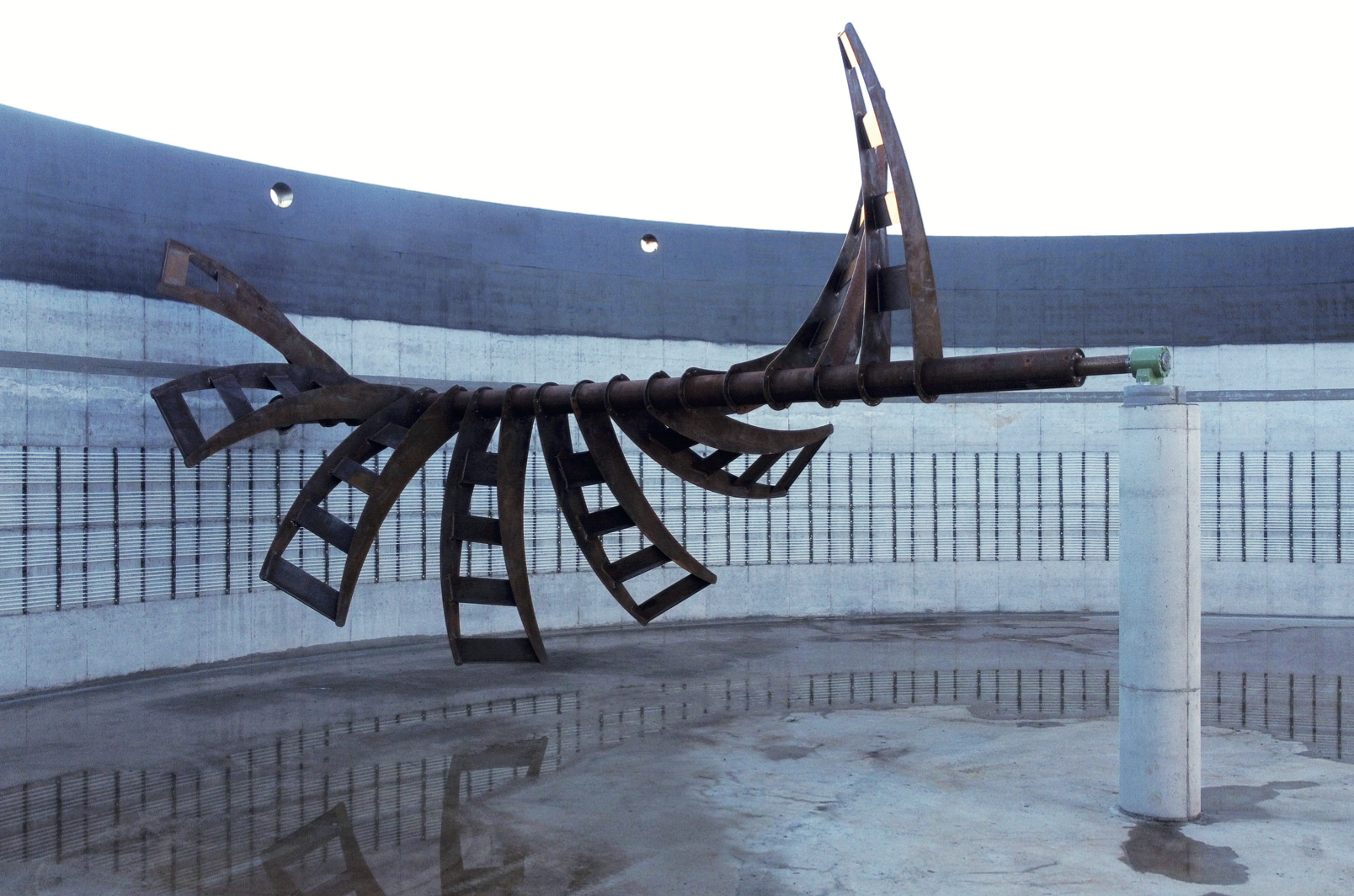
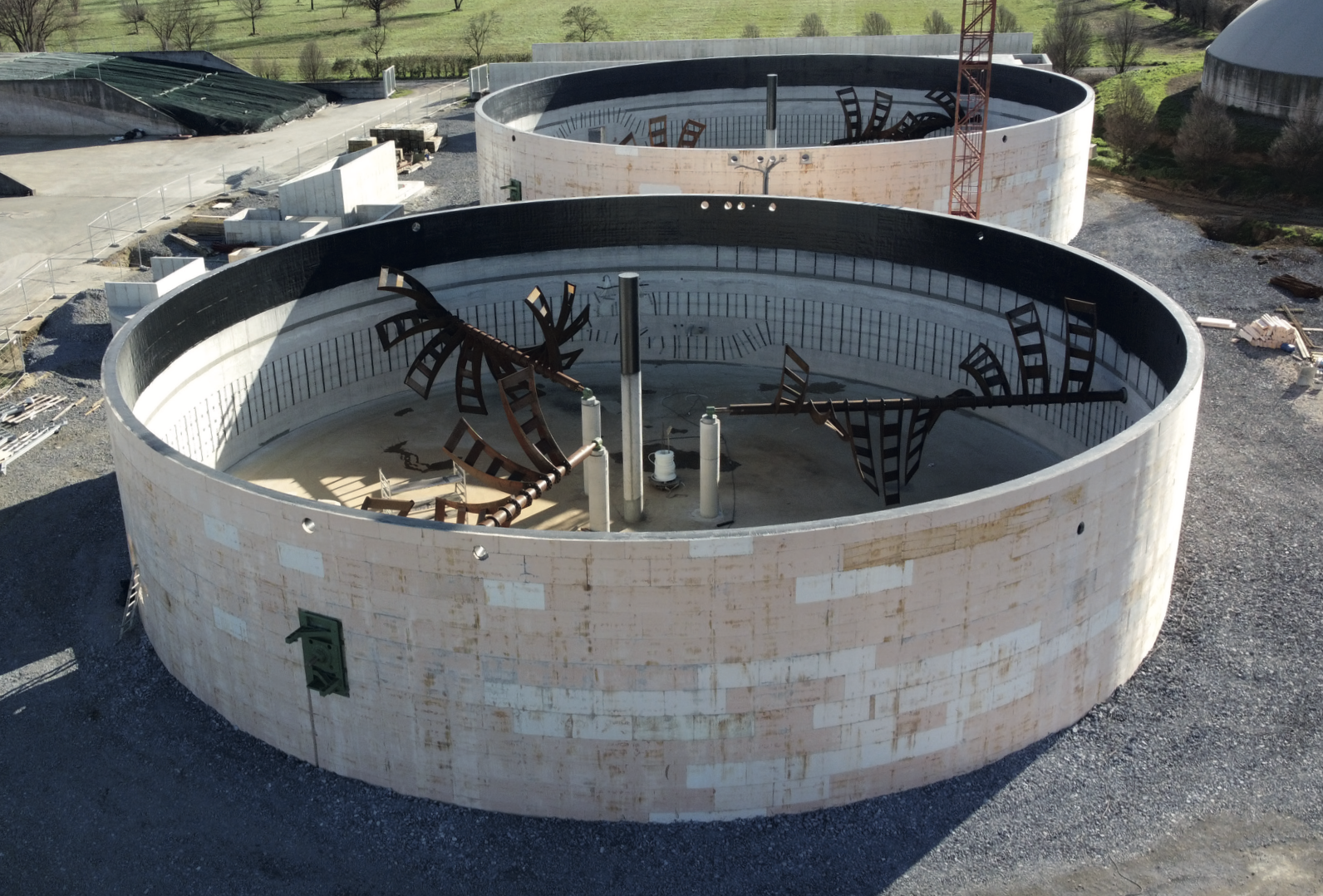
Discover the PUMP ROOM
Our team of technicians builds in our own facilities the modules that will house the pump room of future biogas and biomethane facilities, as well as the control panel room.
The heart of the facility—containing process pumps, electrical panels, gas analysis panels, heating systems, digestate flow management, and supports—is designed and assembled in advance by our qualified personnel, supported by the company’s technical department, and then transported to the construction site, placed, installed, and connected to the rest of the structure.
